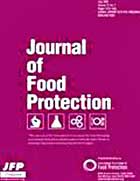 A new study published in the January 2012 edition of the Journal of Food Protection sets the aggregated annual cost of foodborne illness in the United States at $77.7 billion. The basic cost-of-illness model includes economic estimates for medical costs, productivity losses, and illness-related mortality based on value-of-statistical-life studies.
A new study published in the January 2012 edition of the Journal of Food Protection sets the aggregated annual cost of foodborne illness in the United States at $77.7 billion. The basic cost-of-illness model includes economic estimates for medical costs, productivity losses, and illness-related mortality based on value-of-statistical-life studies.
Study author Robert L. Scharff based the cost estimate on data from the Centers for Disease Control and Prevention (CDC) that were revised last year to more accurately reflect how many people get sick in the U.S. from food poisoning. That downward revision shows about 48 million people (1 in 6 Americans) get sick, 128,000 are hospitalized, and 3,000 die each year from foodborne diseases.
The CDC is stressing that this revision doesn’t mean that the food supply is becoming safer, but that they have better methodology and data, which creates more accurate estimates.
Salmonella was the leading cause of estimated hospitalizations and deaths, responsible for about 28 percent of deaths and 35 percent of hospitalizations due to known pathogens transmitted by food. About 90 percent of estimated illnesses, hospitalizations, and deaths were due to seven pathogens: Salmonella, norovirus, Campylobacter, Toxoplasma, E.coli O157, Listeria and Clostridium perfringens.
Food and Drug Administration Commissioner Margaret A. Hamburg, M.D., said this last year about the state of food poisoning: “Foodborne illnesses and deaths are preventable, and as such, are unacceptable… We must, and can, do better by intensifying our efforts to implement measures that are prevention-oriented and science-based.”
The Journal of Food Protection is published by the International Association for Food Protection, a non-profit educational association of food safety professionals comprised of a diverse membership of over 3,400 members from 70 countries.




